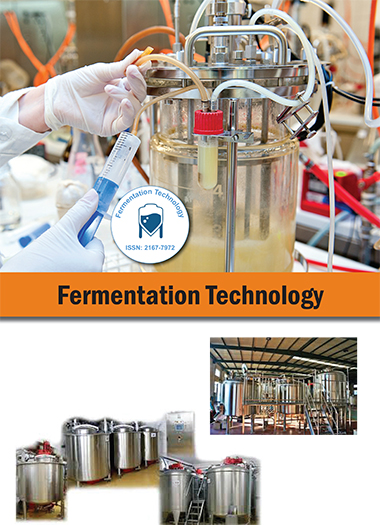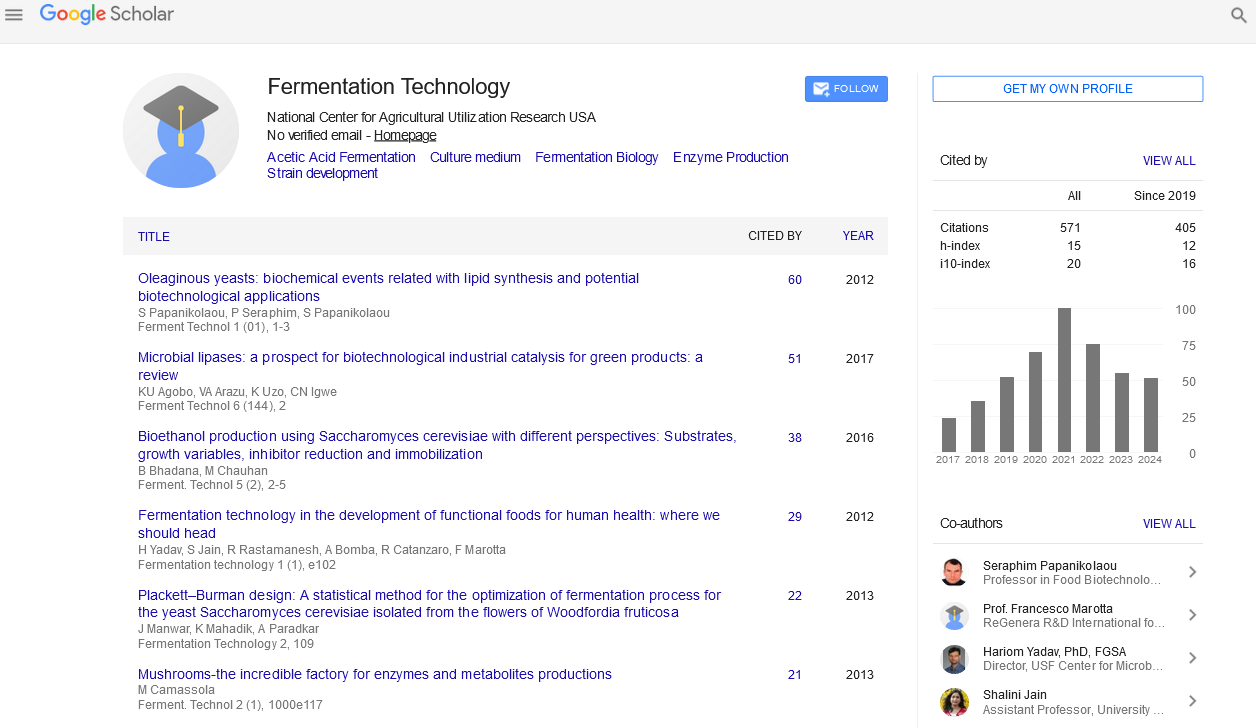Indexed In
- Open J Gate
- Genamics JournalSeek
- Access to Global Online Research in Agriculture (AGORA)
- RefSeek
- Hamdard University
- EBSCO A-Z
- OCLC- WorldCat
- Publons
Useful Links
Share This Page
Journal Flyer

Open Access Journals
- Agri and Aquaculture
- Biochemistry
- Bioinformatics & Systems Biology
- Business & Management
- Chemistry
- Clinical Sciences
- Engineering
- Food & Nutrition
- General Science
- Genetics & Molecular Biology
- Immunology & Microbiology
- Medical Sciences
- Neuroscience & Psychology
- Nursing & Health Care
- Pharmaceutical Sciences
Abstract
Pilot Plant Optimization for Alcohol Production in Fermentation of an Opaque Beer by Varying Sieve Size
Zvidzai CJ, Chidewe C, Mubaiwa J, Tinofa S, Manjeese W and Musundire R
The effect of mesh sieve sizes; 0.84 mm, 1.0 mm and 1.19 mm on alcohol concentration, free reducing sugars profile and total acids produced was determined during opaque beer fermentation. The initial free reducing sugars increased from 7.23 � 0.1 mmol/ml to 7.52 � 0.03 mmol/ml and 7.67 � 0.03 mmol/ml values as the sieve size decreased. Meanwhile, the final alcohol concentration attained for each fermentation reached leveled off after 72 hr producing 3.57 � 0.06% (v/v), 4.09 � 0.29 (v/v)% and 4.23 � 0.25 (v/v)% in order of decreasing mesh sieve size translating to a volumetric productivity of 0.49, 0.54 and 0.61 g.l-1.h-1, respectively. Use of 1.0 mm grinding sieve produced a final ethanol concentration which increased by 9% compared to that of 1.19 mm and 23% to that of 0.84 mm sieve. This realized a Yp/s value increase of 2% with the use of 1.0 mm sieve and 4% with 0.84 mm. The final organic acids determined as lactic acid composition were noted to increase from 0.46 � 0.01 (w/v)%, 0.48 � 0.01 (w/v)% and 0.5 � 0.02 (w/v)% concentration as the sieve size decreased respectively. However, in all brews, the final pH was noted to be of no significant difference (P>0.05) dropping from around the same initial pH value of 5.9 to 3.3. The opaque beer brew prepared with a mesh sieve size 0.84 had its initial free reducing sugars the highest and produced a brew with the highest final ethanol concentration that levelled off at 4.23 � 0.25 (v/v)% after 120 hr. However, it was noted that mesh sieve size 1.0 mm, although it had a lower alcohol content compared to 0.84, it was recommended as an optimized maize grits because it produced an opaque beer product which was consistent and of acceptable palatability to the analysis of sensory evaluation.

